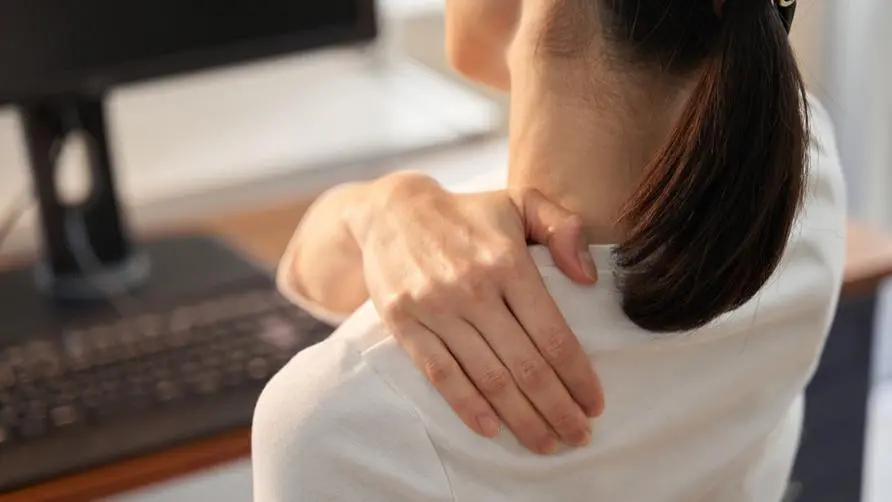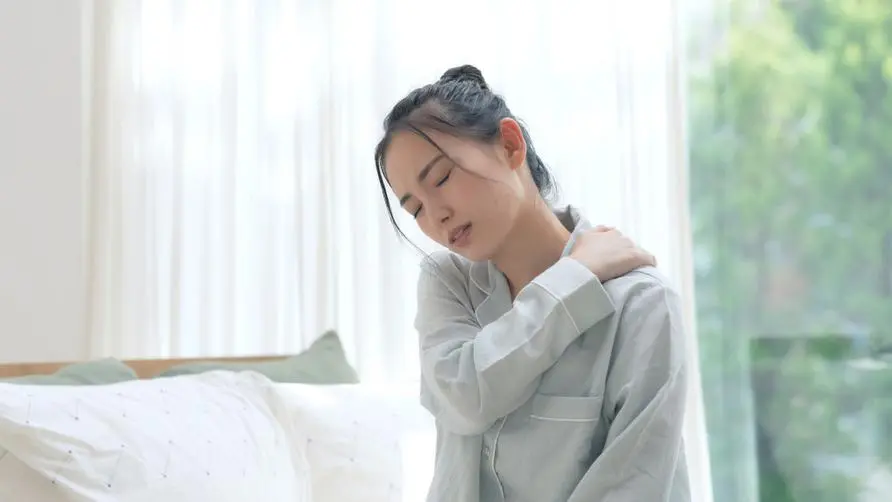Do your shoulders and neck hurt terribly when you lower your head or raise your head? Doctors reveal the reason why it is difficult to treat: "1 joint tissue" has begun to degenerate

Do your shoulders and neck hurt terribly when you lower your head or raise your head? Doctor: It may be a sign of degeneration of “cervical joints”
Persistent neck pain affects your life, and despite repeated treatments, there is no improvement. What is the cause? Dr. Li Yanyu, director of Renyi Boai Rehabilitation Clinic, pointed out in the community that a patient had neck pain that did not heal. He had tried traction and manual treatment many times but had no improvement, and the pain kept recurring. Although the pain does not extend to the arms or fingers, the patient always feels pain and discomfort when turning or raising his head.
After evaluation of symptoms and X-ray examination, it was confirmed that the patient’s cervical spine may have “facet joint”-related diseases, which is a degenerative problem that requires a long treatment time; and if the patient’s posture is incorrect, such as swiping a mobile phone and lowering his head, With computers, etc., diseases will be more difficult to recover from. For treatment, it is recommended to use ultrasound-guided injection, or add medication and exercise rehabilitation to rehabilitation, which would be more appropriate.
Dr. Li Yanyu explained that cervical facet joint disease is a common cause of cervical pain, and about 50% of chronic cervical pain falls into this category. The function of the facet joint is to complete the flexion (head down) or extension (head up) movement of the cervical spine under the driving of muscles, and to stabilize the spine. The cause of pain is mostly caused by inflammation and cartilage wear caused by degeneration.
Are the elderly and people with low heads at risk? If you have “radiating pain” in your shoulder and neck area, seek medical attention immediately
Dr. Li Yanyu said that there are many causes of cervical facet joint degeneration, such as age and poor posture, which can lead to inflammation, cartilage wear, bone spurs, and even chronic shoulder and neck pain, which are not uncommon clinically. A common symptom is “chronic shoulder and neck pain”. Generally speaking, there will be “radiating pain” in the shoulder, neck and scapula, but it is less likely to extend to the arms or fingers.
Why does the patient still have pain even after receiving traction and manual therapy? Dr. Li Yanyu explained that facet joint pain is a “degenerative” problem and requires longer-term treatment. Generally speaking, this disease can be diagnosed clinically, such as by combining X-ray, computerized tomography (CT), magnetic resonance imaging (MRI) and other methods for further confirmation to check whether there is slippage, combined intervertebral disc problems and nerve compression; diagnosis The golden rule is “medial nerve root branch block”.
Treatment options for cervical facet joint degeneration? 3 types of rehabilitation exercises that can be done at home?
What are the treatment options for cervical facet joint degeneration? Dr. Li Yanyu pointed out that treatment options range from the simplest anti-inflammatory and analgesic drugs, instrumental physical therapy (such as traction therapy), manual therapy, and exercise therapy, to invasive nerve root medial branch block surgery, proliferative therapy, radiofrequency cautery, and even Surgery can be used. The main thing is to arrange diagnosis and treatment based on the symptoms and needs of the individual case.
In terms of exercise training and rehabilitation, Dr. Li Yanyu suggested that symptoms can be relieved through 3 types of rehabilitation methods:
Y to W campaign:
Slightly tuck your chin and lift your chest, straighten your hands (Y) without shrugging and clamping your shoulder blades.
Slowly bend your hands (W) without shrugging and keeping your shoulder blades clamped.
Hold each position for 10 seconds, repeat 10 times, and gently reduce the abdomen during the process.
Neck Stretch:
Hold the left side of your head with your right hand and stretch it toward the right side.
Hold for 15 seconds and then switch sides.
Can be done 3-5 times a day.
Thoracic spine range of motion exercise (kneeling position):
Maintain a kneeling position with your elbows resting on a mattress or chair.
Arch the thoracic vertebrae first, and use the back muscles to stretch the thoracic vertebrae.
After stretching to the limit, stop for 5 seconds and repeat 10 times.
The waist and pelvis are both in a kneeling position and do not exert any special force.
In general, Dr. Li Yanyu said that cervical facet joint degeneration is not uncommon, but it is often ignored by patients. If you have been suffering from shoulder and neck pain for a long time but cannot find a clear cause, you should consult a rehabilitation department or orthopedic surgeon as soon as possible to discuss the most suitable diagnosis and treatment method, so as to recover as soon as possible and return to normal life.
Further reading:





